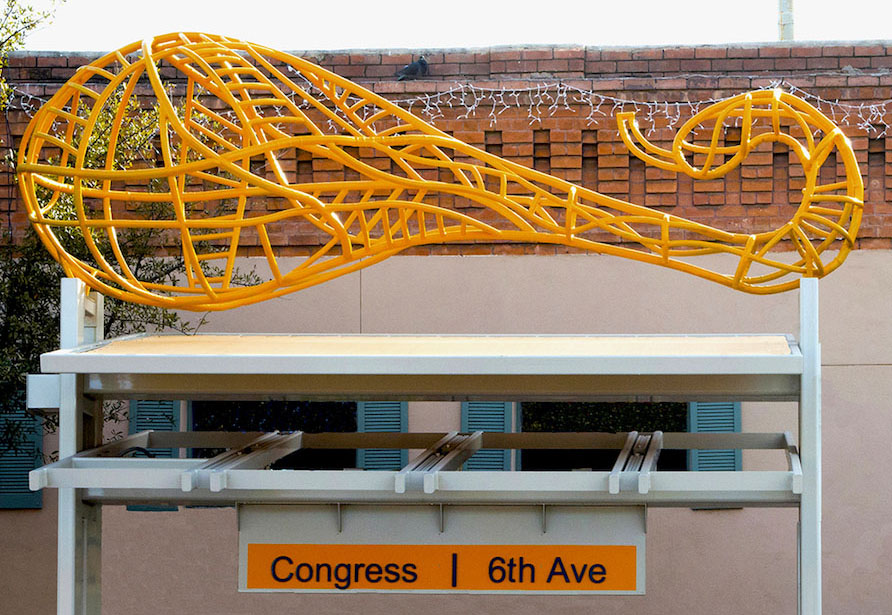
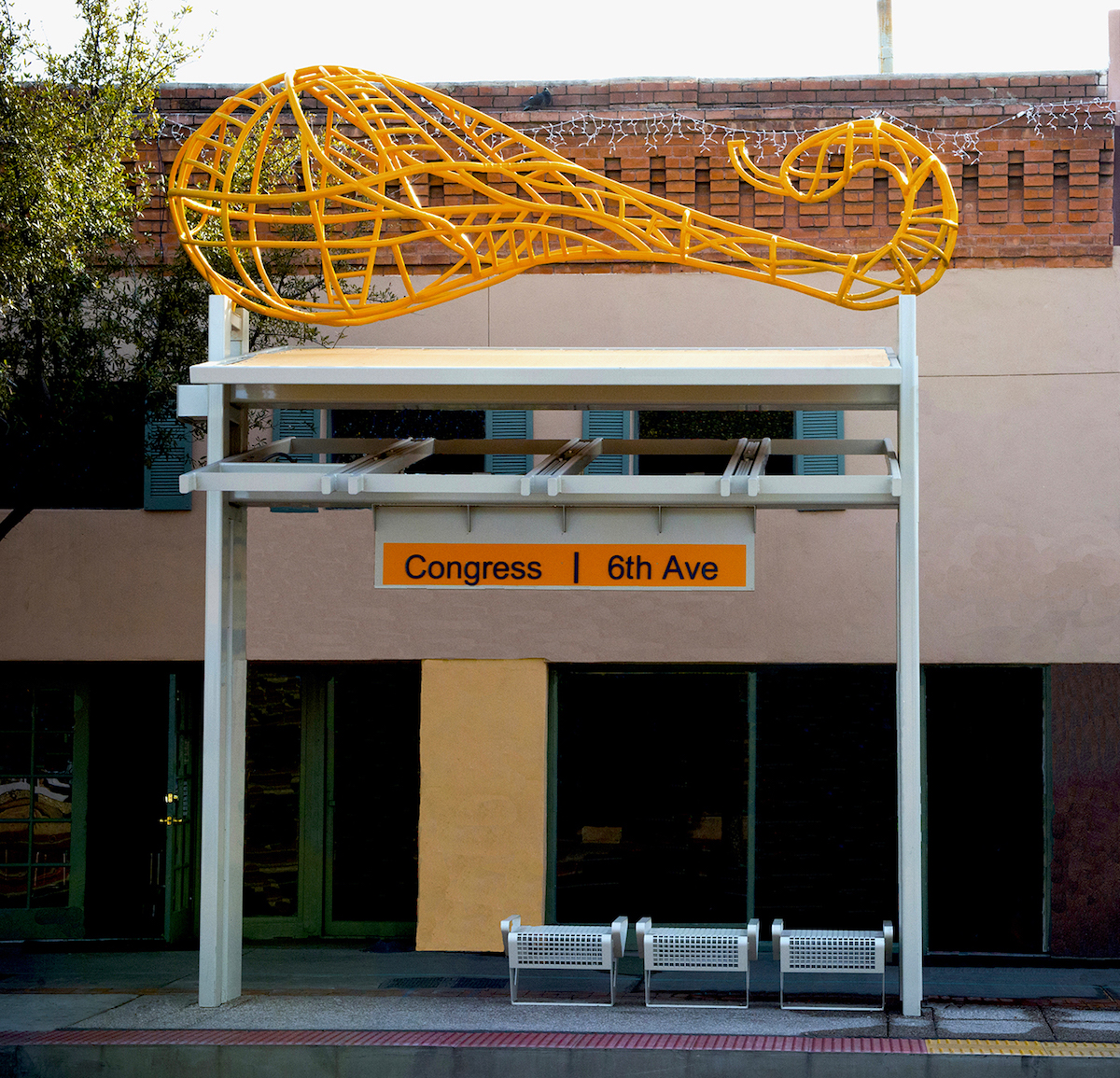
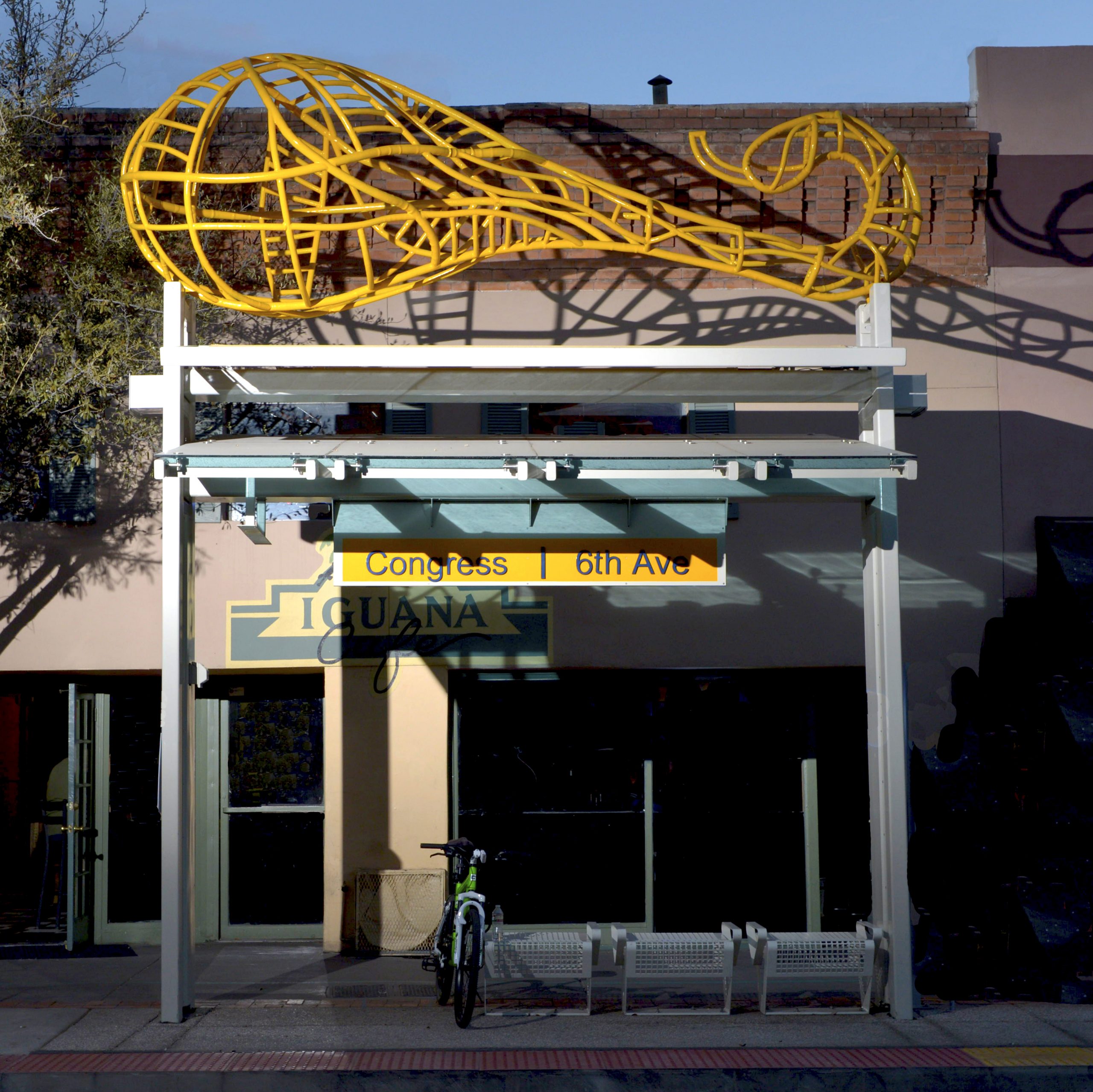
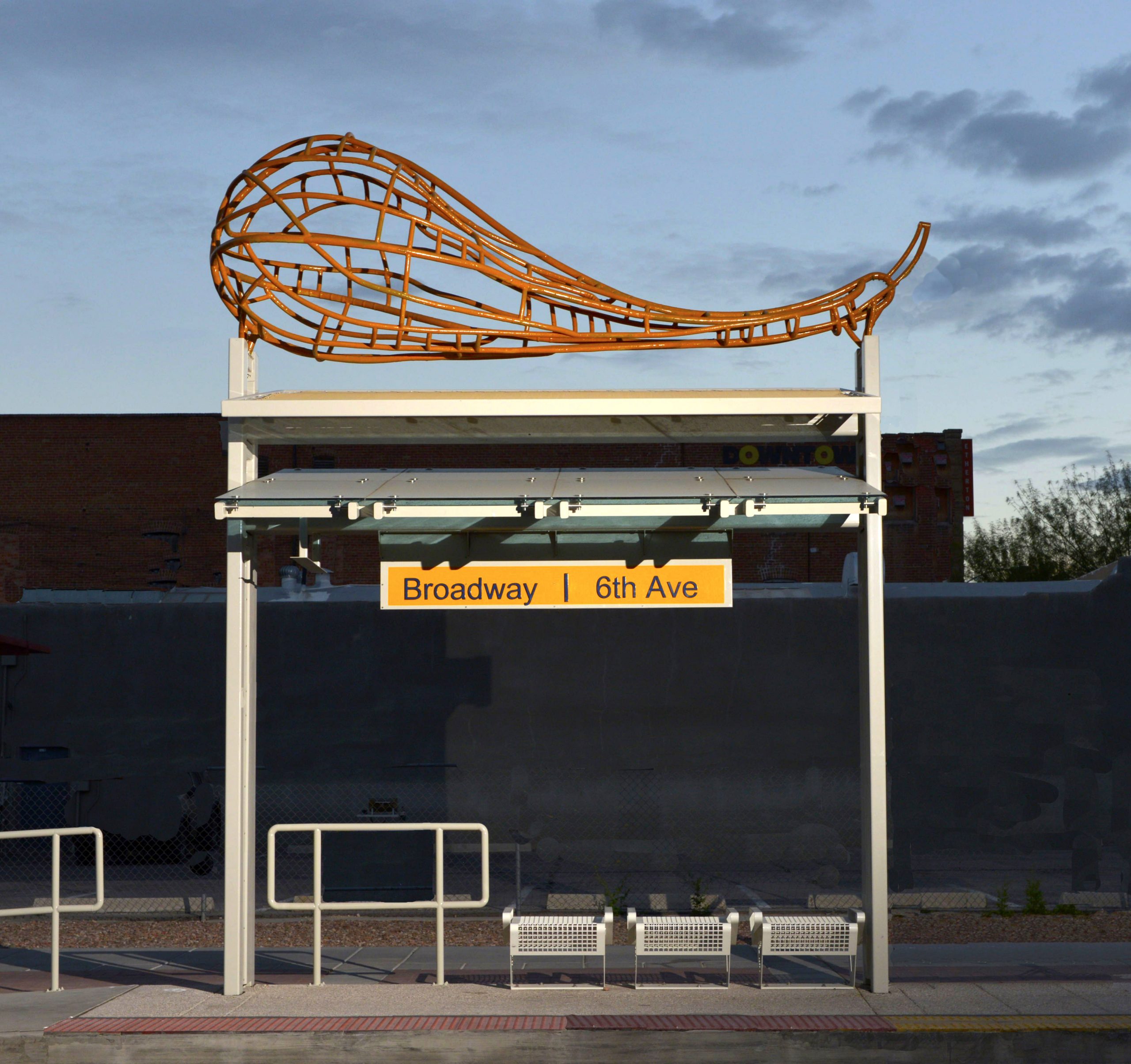
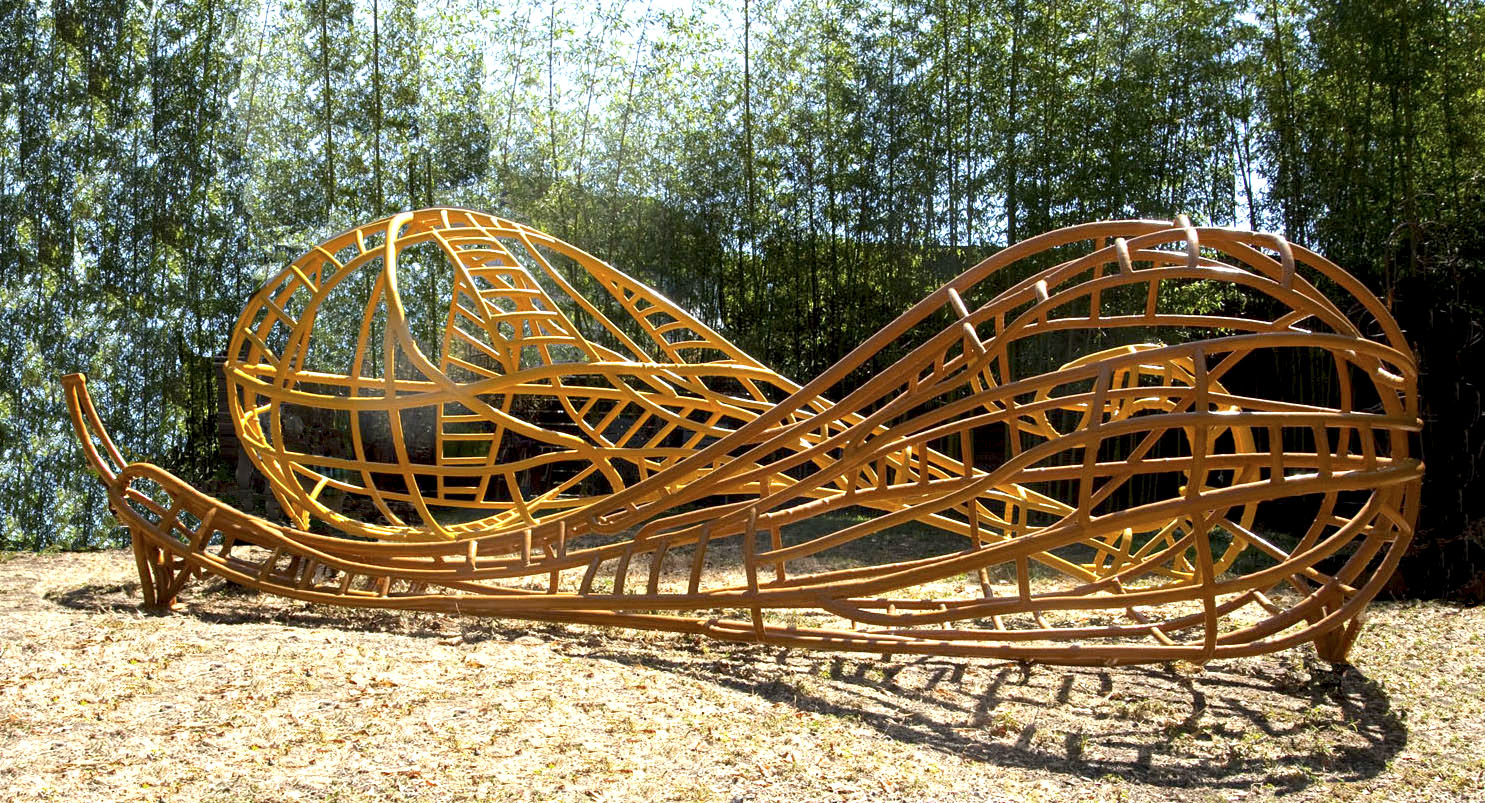
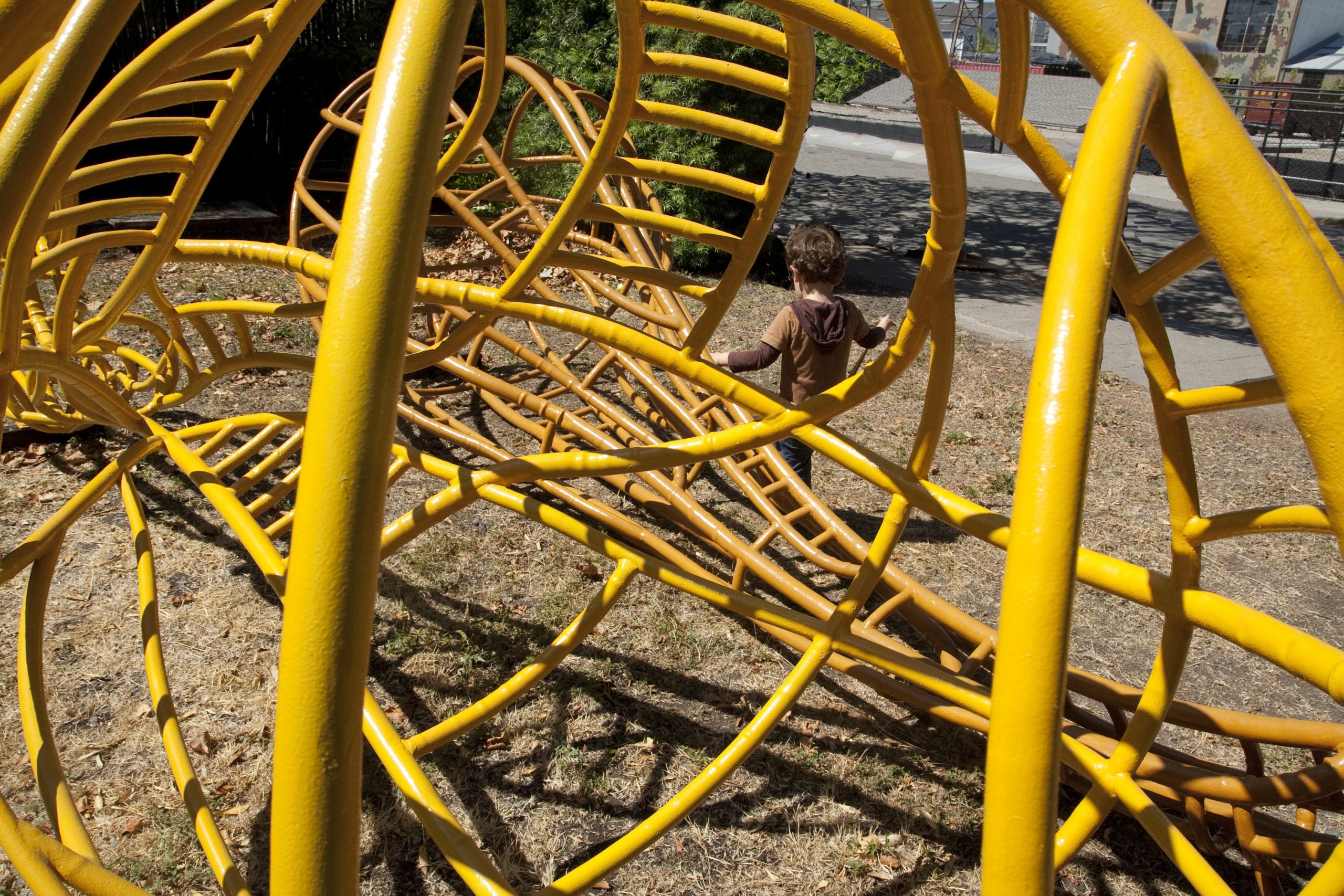
Client: Pima Arts Council & Tucson Modern Streetcar Program
Location: Tucson, AZ, United States
Completion date: 2015
Artwork budget: $125,000
Project Team
Project Management
Pima Arts Council, and Tucson Modern Streetcar Program, Tucson, AZ.
Pima Arts Council, and Tucson Modern Streetcar Program, Tucson, AZ.
Project Coordination
Tucson Modern Streetcar
Tucson Modern Streetcar
Overview
The Calabashes is natures’ perfect water vessel.
Calabashes Steel and Paint 6’ x 15’ x 6’ 2013 Commissioned by the Pima Arts Council, and Tucson Modern Streetcar Program, Tucson, AZ.
Calabashes is an eye-catching, bright-yellow sculpture that piques the interest of passersby begging the question, ‘why a gourd?’. Because the humble gourd is nature’s perfect design for a water vessel. Compelling theories state that the calabash likely played an important role in early human migration, especially over deserts. The bottle gourd is one of the few vessels found in nature that early man could use (especially when lined with tree sap or bee’s wax) to migrate over expanses of arid environments.
Goals
Calabashes is located at the very heart of downtown Tucson. There are two Calabashes, one on each of two Modern Streetcar stop structures (each on a one-way street). Calabashes references water and our relationship with water as a crucial element in our survival and the survival of life on the planet. The goal with the design/concept was to pique the curiosity of the viewer and to spark the imagination, as well as to stimulate thoughts and conversations about the desert and how we live and interact with the earth.
Process
The process was a seamless relationship with the Pima Arts Council staff and the Modern Streetcar team. The bright yellow Calabashes were very well received by the downtown businesses.
Additional Information
To give more context to the story behind Calabashes, here are some fascinating facts from the internet: The bottle gourd, otherwise known as the calabash plant, was prehistoric man’s most useful plant. It is believed to be the first cultivated plant in the world, and may have been domesticated even earlier than food crops and livestock. Its’ hard-skinned fruit was used to make water bottles, spoons, pipes, containers, musical instruments, and ornaments. They were also used to make pontoons in ancient Egypt, swimming aids by the Romans, birdhouses by Native Americans, and more recently as motorcycle helmets in Nigeria. It is the only known plant whose use by humans spanned prehistoric cultures across the entire globe, but one thing that has puzzled scientists was how – given its African origins – it came to be so widely used in Asia and the Americas at least 8,000 – 10,000 years ago.